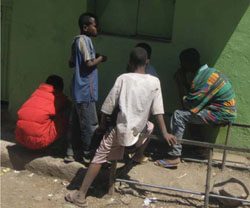What is the study population?
In your work you may have identified something interesting that you would like to investigate further and which could form the basis of a possible research problem. It will probably involve particular groups, for example young people, or people with a specific health problem such as malaria. So, investigating the problem will almost certainly require a research project. These particular groups of interest are referred to as the study population. This study population is the total members of a defined class of people, objects, places or events selected because they are relevant to your research question. For example, if you want to study maternal healthcare, the study population would be all the pregnant women who are under your care. However, a study population may consist of villages, institutions, records, or events such as death due to accidents, etc.
In any research study, the study population has to be clearly defined according to particular characteristics such as age, sex, residence or geographical accessibility to health services. The way you define your study population depends on the problem you want to investigate and on the objectives of the study. For example to investigate health problems of orphans whose parents have died of HIV/AIDS, then your study population could be all children below twelve years of age whose parents have died as a result of HIV/AIDS. On the other hand, to investigate the problem of worm infestation in primary school children your study population could be all primary schools in your community.

If you want to make a study of malaria in your community, what would be your study population?
Your study population would be all the people in your community. Some of these people will have malaria, but you will probably want to consider the situation of everyone in your community.
When considering what your study population might be, there may also be practical questions to consider such as how easy is to get access to the study population you are hoping to study.
